King Midas of Phrygia is notorious in Greco-Roman legends for his greed and foolishness — and he may have been inspired by a real-life monarch.
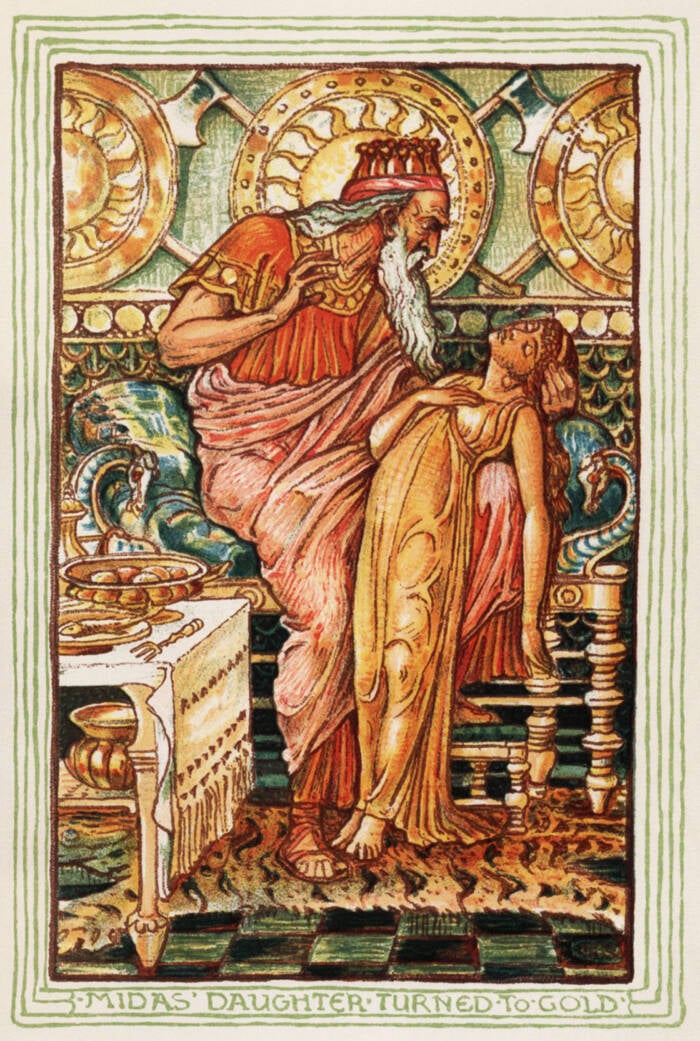
Public DomainKing Midas wanted to transform anything he touched into gold, but his wish had unintended consequences.
If you could be granted one wish, what would you ask for? Love? Power? Money? The legendary King Midas took the last option one step further. He wished that he could turn anything to gold just by touching it.
Most probably know how this turned out. Instead of being surrounded by riches, Midas found that his golden touch was unexpectedly cumbersome — and dangerous. Not only did his meals turn to solid gold as he tried to eat, but even his daughter was frozen into gold after she ran to hug him.
So where did the King Midas myth come from? Is there any truth behind the fictional tale? And what lessons does this ancient legend hold today?
King Midas And The Golden Touch
The Greco-Roman myth of King Midas tells the story of a Phrygian monarch, Midas, who was obsessed with gold. According to Greeka, the wealthy monarch spent most of his days counting his gold coins and sometimes even covering his body in gold items. And one day, something happened that gave Midas the chance to take his gold obsession even further.
As the tale goes, a satyr named Silenus got lost while traveling with Dionysus, the Greco-Roman god of wine, pleasure, and madness. Silenus wandered into Midas’ gardens and fell asleep, which was where the king found him. Not only did Midas warmly welcome Silenus to stay at his palace, but he also made sure to return the satyr to Dionysus’ side.
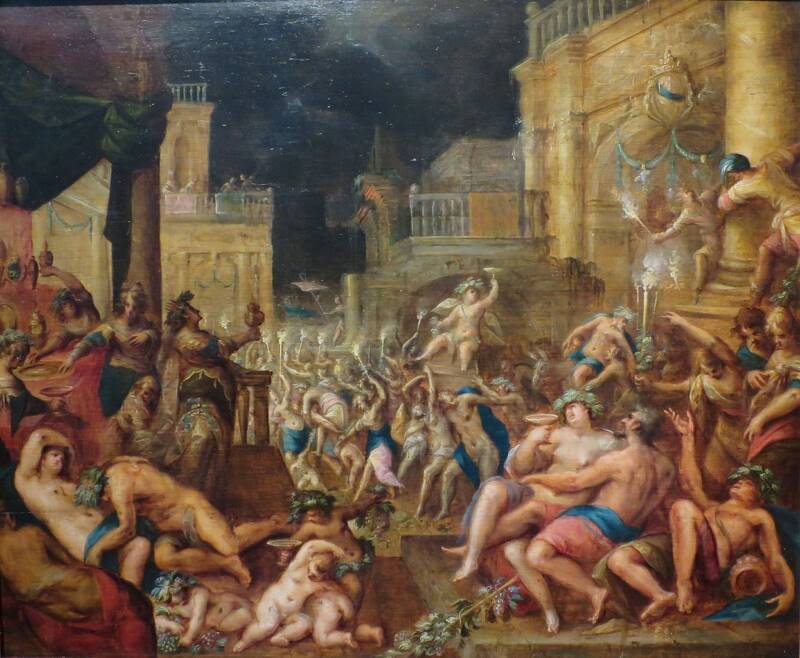
Public DomainA 16th-century painting entitled “Midas’s Feast in Honor of Bacchus [Dionysus] and Silenus.” By Gillis van Valckenborch.
The grateful Dionysus then decided to reward King Midas by granting him a wish. And Midas, obsessed with gold, made the obvious choice. He wanted the power to transform anything into gold just by touching it.
At first, King Midas was delighted with his new ability. He raced around his palace, touching chairs and tables and watched with glee as they turned into solid gold beneath his fingers. But before long, the king’s mood started to darken. When he reached for a flower to smell it, it turned to gold. When he tried to eat food, it also turned to gold. And when the king tried to drink the wine that Dionysus had given him, it turned to liquid gold.
In some versions of the story, things soon took an even darker turn. As the king sat stunned with the realization of what his god-given power entailed, his daughter ran into the room and straight into her father’s arms. She immediately turned into a solid gold statue after he touched her.
Eventually, King Midas cried out for Dionysus’ help. Dionysus told the king to wash his hands in the Pactolus River, located near Sardis in modern-day Turkey. Midas rushed to the banks of the river, plunged his hands in the water, and watched the gold flow out of his fingertips. After that, everything returned to normal. Even Midas’ daughter was restored to life.
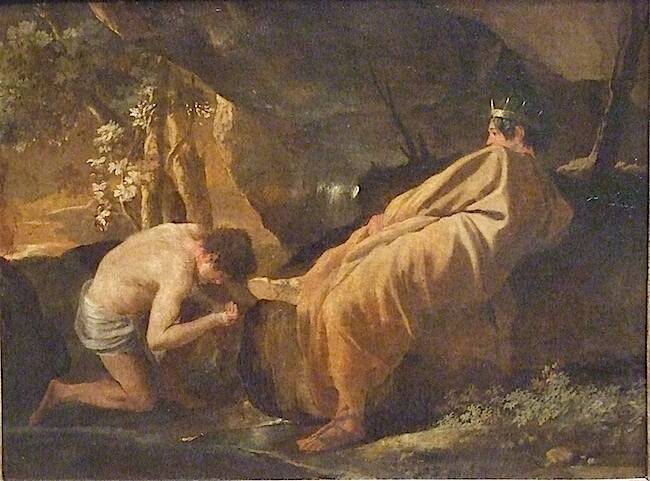
Public DomainA 17th-century painting of King Midas washing his hands in the Pactolus River. By Nicolas Poussin.
This is the King Midas myth that most people know. But there’s also another, lesser-known myth about this infamous monarch.
The Lesser-Known Story About Midas
In another part of the King Midas myth, the monarch turned away from his obsession with gold — and toward nature. Ancient Origins explains that in this part of the story, the king started spending his time outdoors and became a fervent follower of Pan, the god of the wilderness and nature.
And so when Pan challenged Apollo — a powerful god of the sun, music, poetry, dance, and other things — to a flute contest, Midas threw his support behind Pan. After the competition, all of the onlookers agreed that Apollo had played better flute and won. But Midas stubbornly insisted that Pan had triumphed, which led the furious Apollo to curse the king.

Public DomainA 16th-century depiction of the competition between Pan and Apollo. By Jacob de Backer.
The last time that King Midas had crossed paths with a god, Dionysus, he was given the power to transform objects into gold. This time, the furious Apollo touched the king’s head and gave him donkey ears.
The king was deeply ashamed of this punishment and started wearing a headdress or turban to cover up his embarrassing new ears. He tried to keep the ears as secret as he could, and only told his barber about them. The barber, in turn, dying to tell someone, dug a hole in the ground and whispered about Midas’ donkey ears into it: “Midas has ass’s ears.”
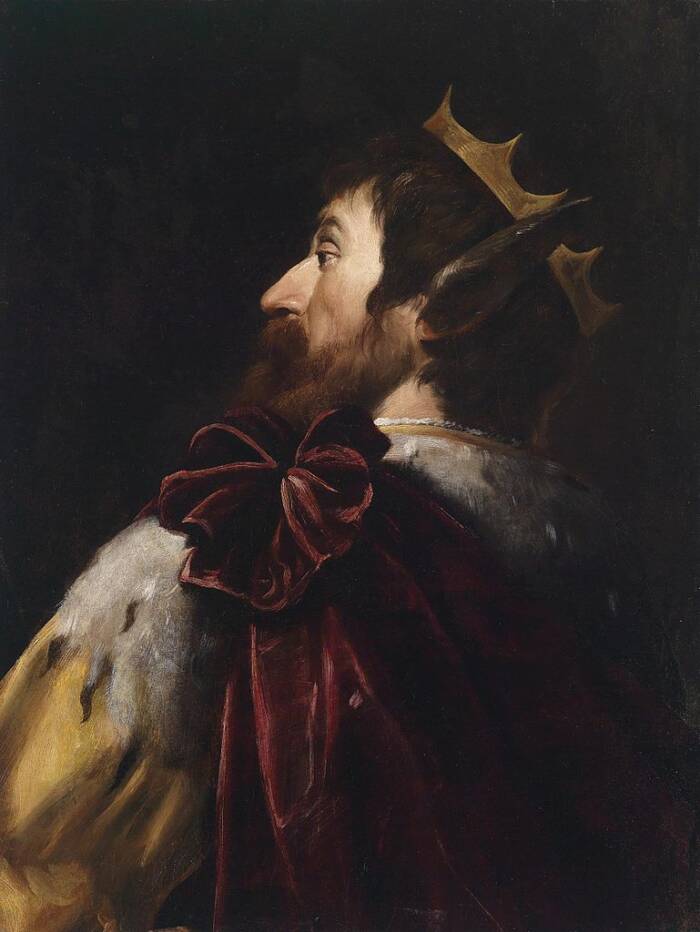
Public DomainA 17th-century depiction of King Midas with donkey ears.
Unfortunately for the embarrassed king, reeds grew out of the hole that the barber had dug. They whispered the king’s secret to the wind and before long, everyone knew. In some versions of the story, the tale simply ends with the king’s humiliation. In other versions, it ends with his suicide.
So where exactly did the King Midas myth come from?
The Origins Of The King Midas Myth
Though King Midas is mostly known as a fantastical figure in Greek and Roman legend, the myth does appear to contain some historical truths. As the World History Encyclopedia notes, the character of Midas may be based on a real 8th century B.C.E. ruler named Mita of Mushki, who reigned over the ancient kingdom of Phrygia (located in modern-day Turkey).
His kingdom was very wealthy, which is possibly where Midas’ mythological obsession with gold comes from. Then again, it’s also possible that the gold theme of the Midas myth comes from ancient clothing. As Penn Museum curator C. Brian Rose told ShareAmerica, clothing of the rich in Phrygia was once coated with iron oxide, which could have given them a gold color.
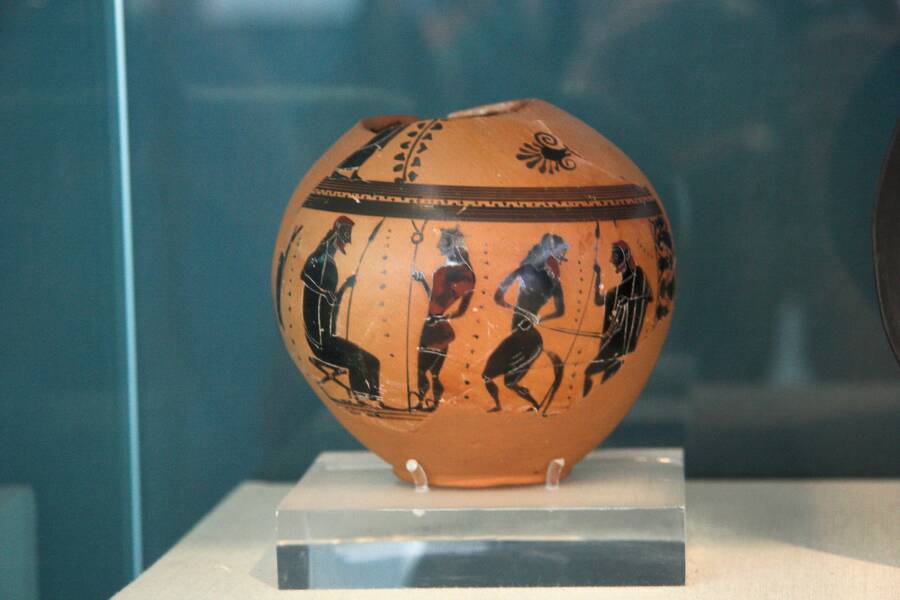
Zde/Wikimedia CommonsGreek pottery that purportedly shows King Midas, sitting on the left.
“So the story may have developed from the flashy clothing worn by the elite,” Rose explained.
But much like the fictional Midas, Mita’s wealth wouldn’t protect him from a terrible fate. Though never afflicted with donkey ears, Ancient Origins reports that the ancient ruler likely killed himself by consuming poison after a nomadic people called the Cimmerians invaded his kingdom. Some believe Mita’s tomb is near Gordium, the former capital of the ancient Phrygia, where archaeologists found grave goods and an inscription of the name “Mida.”
But even though King Midas’ historical identity may be murky, the river where he washed his hands of Dionysus’ gift is very real. The Pactolus River is located in present-day Turkey. And in ancient times, it was rich in electrum, an alloy of gold and silver, upon which many ancient economies were based.
It seems that these snippets of historical fact were incorporated over the ages into ancient myths. As Ancient Origins reports, Ovid the Roman poet was the first person to put them into a play, Metamorphoses.
Even though the myth of King Midas is ancient, it’s shown incredible staying power. It offers a timeless lesson about the pitfalls of greed, about being grateful for what you have, and about being careful what you wish for. It also seems to make a point about secrets and gossip — and to offer a warning to never bet against the god of music in a flute competition.
After reading about the myth of King Midas, go inside the historical debate over whether or not the Trojan Horse was real. Or, look through these fascinating facts about life in ancient Greece.





